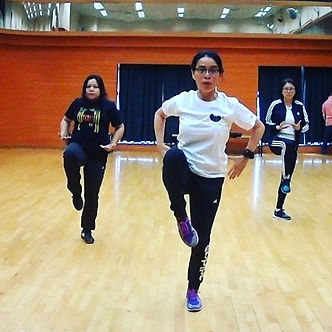










Tai Chi and Kung Fu by Amy Sifu


Baguazhang
Baguazhang is one of the three main Chinese martial arts of the Wudang school, the other two being Taichi and Xing Yi Quan. It is more broadly grouped as an internal practice.
The practice of circle walking, or "turning the circle", as it is sometimes called, is Baguazhang's characteristic method of stance and movement training. All forms of Baguazhang utilize circle walking as an integral part of training. Practitioners walk around the edge of the circle in various low stances, facing the center, and periodically change direction as they execute forms. Students first learn flexibility and proper body alignment through the basic exercises, then move on to more complex forms and internal power mechanics. Although the internal aspects of Baguazhang are similar to those of Xingyiquan and Taijiquan, they are distinct in nature.
Baguazhang contains an extremely wide variety of techniques, including various strikes (with palm, fist, elbow, fingers, etc.), kicks, joint locks, throws, and distinctively evasive circular footwork. As such, Baguazhang is considered neither a purely striking nor a purely grappling martial art. Baguazhang practitioners are known for their ability to "flow" in and out of the way of objects. Baguazhang's evasive nature is also shown by the practice of moving behind an attacker, so that the opponent cannot harm the practitioner.
Although the many branches of Baguazhang are often quite different from each other, all have circle walking, spiraling movement, and certain methods and techniques (piercing palms, crashing palms, etc.) in common.
Baguazhang's movements employ the whole body with smooth coiling and uncoiling actions, utilizing hand techniques, dynamic footwork, and throws. Rapid-fire movements draw energy from the center of the abdomen. The circular stepping pattern also builds up centripetal force, allowing the practitioner to maneuver quickly around an opponent.
八卦掌
八卦掌是著明的內家拳術,八卦掌是以掌法和步法的變換轉行為中心的拳術套路。它以擺扣步走轉為主,左右旋轉,勢勢相連,身靈步活,剛柔並濟。它的基本內容是:單換掌、雙換掌、老八掌和六十四掌,並以推、托、帶、領、搬、攔、截、扣等為基本掌法。它的基本步法是起、落、擺、扣等。練法有定架子、活架子、變架子。隨便那一掌,都可以和另一掌連貫起來互換動作自然巧妙,變化多端,連綿不斷,顯示其獨特的風格。











程廷華論八卦掌
練八卦掌之道,先得明師傳授,曉拳中之意義,並先後之次序。
其實八卦,“本是一氣變化”之分(一氣者,即太極也),一氣仍是八卦、四象、兩儀之合。是故太極之外無八卦,八卦兩儀四象之外亦無太極也。所以一氣八卦為其體,六十四變以及七十二暗足互為其用。體亦謂用,用亦謂之體,體用一源,動靜一道。遠在六合之外,近在一合身中。一動一靜,一言一默,莫不有卦象焉,亦莫不有八卦之道焉。其道之大而無不包,其用至神而無不存。
若是言練,先曉伸縮旋轉圜研之理。先以伸縮而言之,縮者,是由高而縮於矮,由前而縮於後。從高而縮於矮之情形,身子如同縮至於深淵,從前而縮於後之意思,身體如同縮於深窟。若是論身體伸長而言之,伸者身體縮至極矮極微處,再往上伸去如同手捫於天,往遠伸去,又同手探於海角,此是拳中開合抽長之精意。古人云;“其大無外,其小無內,放之則彌六合,卷之則退藏於密”。所以八卦拳之道無內外也。
研者身轉如幾微的螺絲細軸一般,身體有研轉之形,而內中之軸無離此地之意也。旋轉者,是放開步法,邁足望著圓圈一旋轉,如身體轉九萬里之地球一圈之意也。至於身體剛柔,如玲瓏透體,活活潑潑,流行無滯,又內中規矩的的確不易。胳膊百煉之純鋼,化為繞指之柔;兩足動作,皆勾股三角;兩手之運用,又合弧切八線。所以數不離理,理不離數,理數兼該,乃得萬全也。
將此道得之於身心,可以獨善其身,亦可以兼善天下。身之所行是孝、悌、忠、信,無事口中可以常念阿彌陀佛,行動不離聖賢之道。非知此,不足以言八卦拳術;亦非如此,不能得八卦拳之妙道也。





